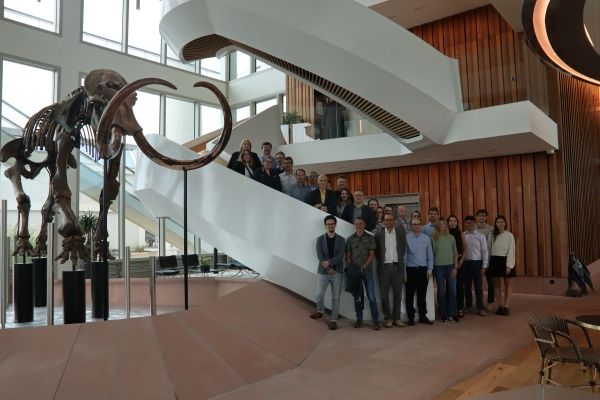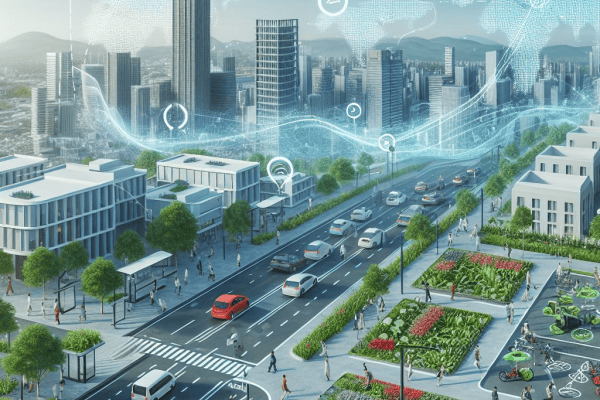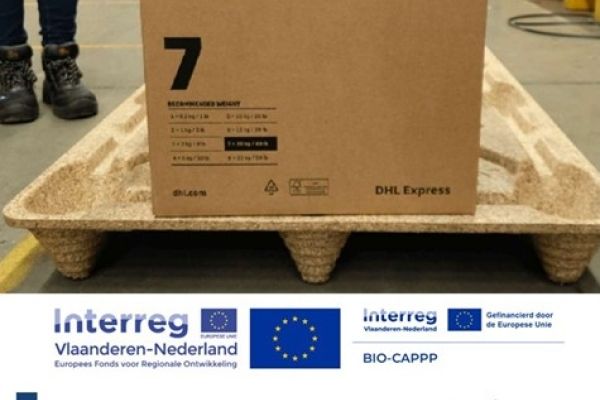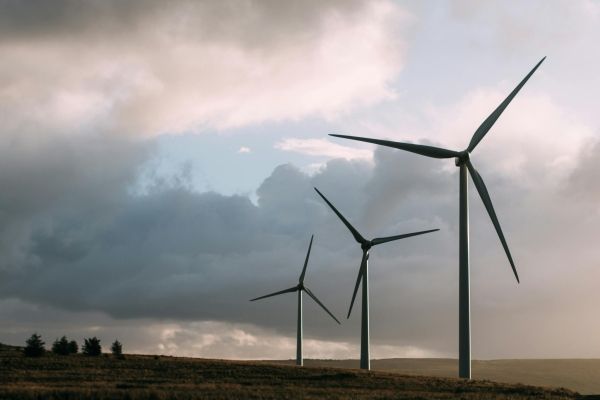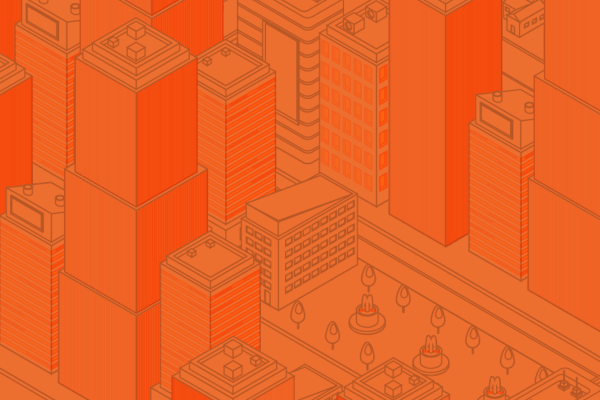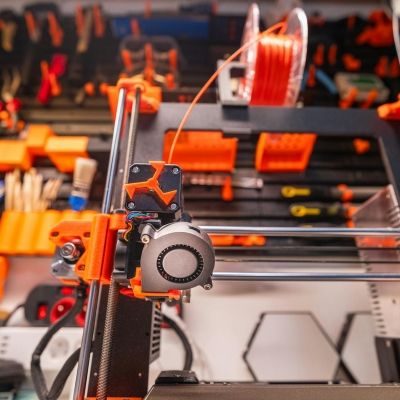The fashion economy urgently needs to become more sustainable, but how?
Barely 1 % of all worn clothing in Europe is recycled to a high standard. The rest is largely incinerated along with household waste. The logical answer to how to do things differently seems to be to improve the collection, sorting and recycling process. But it is not that simple, as the experts on circular economy at VITO know. ‘A real transition to a circular fashion economy can only be achieved if the change is systemic and occurs right across the value chains.'
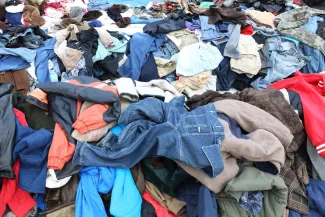
The environmental and climate impact of our textile and clothing consumption is enormous. The production and transport of all textiles sold in Europe annually requires per European more than a tonne of primary raw materials (such as materials for fibres), as much as 100,000 litres of water and hundreds of square metres of agricultural land. Moreover, most of these garments and textiles remain in circulation for a very short time. It is a highly disposable economy, and in today's world where sustainability and the transition to a greener world are not an option but a must, this can no longer be tolerated.
But how do you change the textile sector? How do you transform it from a linear into a circular model? ‘Countless initiatives have been taken to market so-called sustainable textiles,' says Evelien Dils of VITO. ‘But these have actually had very little effect. Not infrequently, they were simply greenwashing fast fashion (clothes that are worn for only a very short time and then quickly discarded).' Another thing that such initiatives often lack, even if they're sometimes well-intentioned, is a broad scope. ‘The textile sector is an immense and complex system that is also very globally organised. You therefore also have to ask yourself what Europe can do to bring about changes outside our continent. And then there are the many trade-offs. Take for example the introduction of new materials (such as apple leather). That is not necessarily beneficial. It just depends on how the textile industry picks up on some innovations and how they bring these to the consumer.'
Selective collection is underway
Nevertheless, something has to happen urgently, a view also shared by Europe. In 2020, the European Commission presented its Circular Economy Action Plan (as part of the Green Deal) in which textiles were defined as one of the most important product groups. At the end of March 2022, it subsequently launched an ambitious strategy for the development of a circular fashion economy. One of the most important elements in this plan is that targets will be set in the near future for the recycling and reuse of collected textiles. By 2025, every Member State will have to organise a system for the selective collection of discarded textiles - just as we do for plastic waste, for example, with the familiar PMD bags. ‘That will be a massive shift,' says Tom Duhoux of VITO. ‘But this measure alone is not enough. When that pile of textile waste is there, we will, of course, need to know exactly what to do with it. And we must be ready by then, both technologically and organisationally.
For both VITO experts in the circular economy, the European textile strategy held few secrets. And that is not surprising, because Europe has already called on VITO many times to find out how the European textile industry can evolve towards more circularity and sustainability. The most recent study dates from February 2022. In a research report commissioned by the European Environment Agency, the answer was that the textile industry should focus on circular design with a view to extending lifetimes, using secondary materials and improving the collection of discarded textiles and high-quality reuse and recycling.
When asked how the textile sector can be made more sustainable, the logical answer is often: recycling. However, this alone is not enough, even if it were possible to extensively recycle different textiles and designs, which is certainly not the case today. Duhoux: 'Low-grade recycling (downcycling) is not an option, because that does not square with circularity. In addition to reducing our consumption, we must move towards recycling 2.0, in which the recycling process is attuned to the quality demanded by the textile industry.'
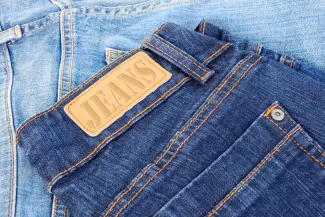
Six representative types of clothing
Such fine-tuning requires cooperation, which brings us to the SCIRT project coordinated by VITO, a European initiative launched in 2021 that (to put it in a nutshell) investigates the transition to textile-to-textile recycling. Although that is far too narrow a description. ‘SCIRT brings many aspects together,' says Dils. ‘There is a technological component in which we do research into improved recycling, for example of complex fibre mixtures. But the project also focuses on, for example, the sorting of textile waste, in which we study how we can better tailor it to the needs of a recycling company.'
And then, of course, there are the textile companies and the fashion designers, because changes will be needed there too. That is why five international clothing brands, each of which sells different types of clothing to different target audiences, are involved in the project.
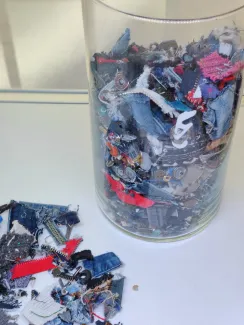
Specifically, these brands are Decathlon (swimwear, Petit Bateau (children's bodysuit), Bel & Bo (casual dress), HNST (jeans and jumper) and Xandres (formal wear). In cooperation with technical partners and research institutes such as VITO, these brands will develop six different representative clothing types based on recycled textile fibres.
Finally, the consumer is also involved in SCIRT. ‘We will also set up a true cost model in which we quantify all third-party costs that are currently not included in the selling price of clothing (such as environmental costs or social costs of plastic waste),' says Duhoux. 'Then we can calculate the true cost price of a garment.' The true cost model can serve as a lever to adjust the consumer's perspective, but also to convince policymakers that, for example, manufacturers who work sustainably deserve support in the form of a level playing field.
Another feature of SCIRT is its systemic aspect. ‘A real transition to a circular fashion economy will only happen if the change is systemic and takes place throughout the entire value chains,' says Duhoux. 'And that will only be possible if all parties involved, from collectors over sorters and recyclers to spinners and designers, have a common interest and goal to focus on.' At the same time, the project, which runs until 2024, is also pragmatic. Dils: 'We do not seek to create the ideal system, because then you actually have to start from scratch and that is totally unrealistic. We are looking at how we can push the current system in the direction of a circular fashion economy through targeted and well-considered innovations, interventions and collaborations. That is how we are trying to set the transition in motion.’
SCIRT: an ideal experimental platform
One of the fashion companies involved in the SCIRT project is the Belgian Xandres. The brand has been committed to sustainability for some time now, focusing on six pillars: materials, design, production chain, packaging, logistics and also the customer (by offering a repair and maintenance programme, for example). Moreover, within its 'Xandres Lab', the brand consciously seeks out experiments and innovation around the circular economy. ‘For us, this project is the ideal experimentation platform to see if we can succeed in bringing a product that is completely recycled through textile-to-textile to the market,' says Jasmien Wynants, sustainability coordinator at Xandres. ‘We start from existing trousers with a complex fibre composition (a mix of wool, polyester and lycra) and together with VITO and the other research and scientific partners, we look at whether we can produce these trousers in a post-consumer recycled version, at the same quality and price.'
For Xandres, the exercise is very interesting at product level, no least to find out to what extent it is scalable and how this fits in with the business model. ‘How realistic is a take-back system? What costs are involved? What is the true cost of an ordinary pair of trousers versus that of SCIRT trousers, and what happens to the price, for example, if you also take the social and ecological costs into account, and who pays for those? These are the kinds of questions we want to try to answer in this project.'




